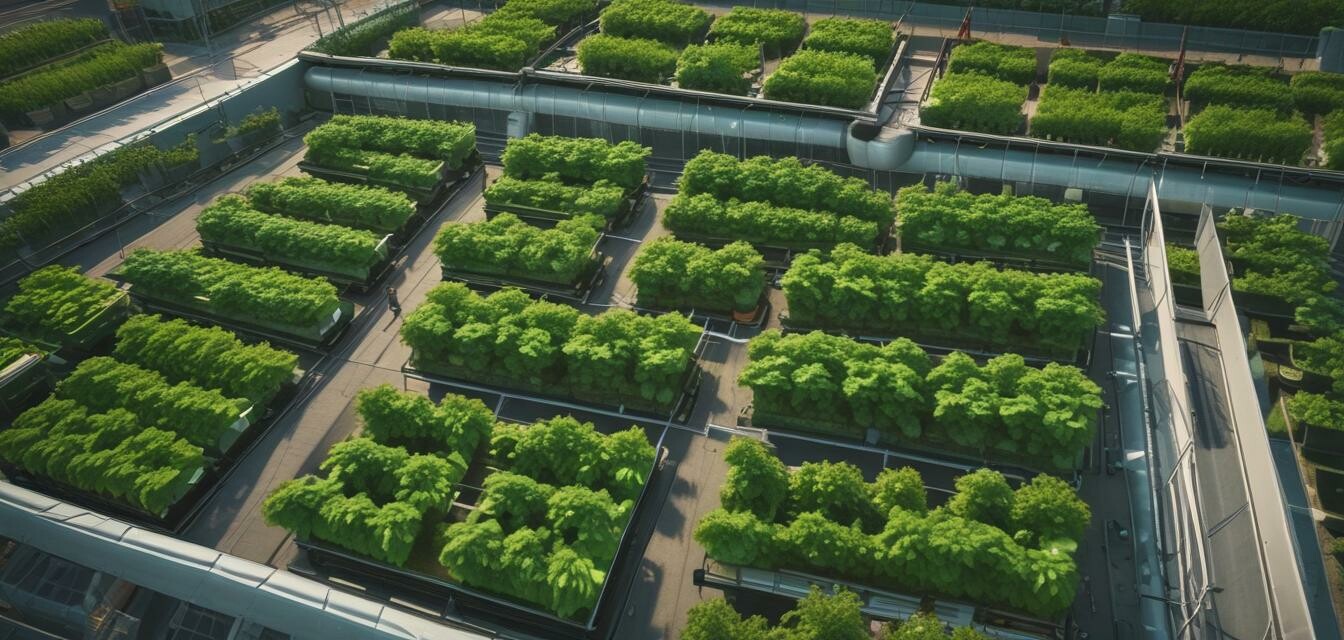
Hydroponic Gardening: The Future of Urban Agriculture
Key Takeaways
- Hydroponic gardening offers sustainable food production in urban environments.
- It maximizes space and water efficiency, crucial for densely populated areas.
- This method can lead to faster growth rates and higher yields compared to traditional methods.
- Hydroponics can reduce transportation costs and carbon footprints by growing food closer to consumers.
- Awareness of innovative hydroponic solutions is essential for the future of urban food systems.
As cities grow denser and urban populations expand, the challenge of ensuring food security rises to the forefront. Traditional farming methods struggle to keep up with the increasingly urbanized lifestyle of many people. Enter hydroponic gardening—a revolutionary approach that is transforming the landscape of urban agriculture.
What is Hydroponic Gardening?
Hydroponic gardening is the method of growing plants without soil, using nutrient-rich water to deliver essential nutrients directly to plant roots. This innovative system allows for efficient use of water and space—key benefits when farming in urban settings where soil conditions may be inadequate and land is scarce.
The Importance of Hydroponic Gardening in Urban Areas
The role of hydroponic gardening in urban agriculture solutions cannot be overstated. Below are several critical aspects driving its importance:
- Space Optimization: Hydroponics allows for vertical gardening, making it feasible to grow food in small apartments, rooftops, or abandoned lots.
- Water Efficiency: Hydroponic systems use considerably less water than traditional farming methods, addressing urban water scarcity issues.
- Year-round production: By controlling environmental variables, hydroponic systems enable year-round cultivation, regardless of outdoor weather conditions.
- Enhanced Growth Rates: The nutrient solution and optimal conditions can lead plants to grow faster than they would in soil.
Hydroponic Gardening Techniques
There are several hydroponic systems that are currently being utilized in urban gardening:
| Hydroponic System | Description | Pros | Cons |
|---|---|---|---|
| NFT (Nutrient Film Technique) | A thin film of nutrient-rich water circulates over the roots. | Efficient use of water and nutrients; rapid growth. | Requires constant monitoring; vulnerable to pump failures. |
| Deep Water Culture (DWC) | Plants are suspended in a nutrient solution with air stones providing oxygen. | Simple to set up; suitable for beginners. | Temperature control is critical; risks of root rot. |
| Drip System | A drip line delivers water and nutrients to each plant. | Excellent for plant growth; efficient use of resources. | Can be complex to maintain; clogging issues. |
The Future of Urban Food Systems
As urban areas grow, the necessity of innovating food systems becomes crucial. Hydroponic gardening presents a myriad of opportunities to reshape how cities approach food production. Here are some potential impacts:
- Local Food Production: Reducing the distance food travels from farm to table lowers carbon emissions and enhances freshness.
- Community Engagement: Community hydroponic projects can foster local engagement, bringing neighborhoods together through food.
- Educational Opportunities: Schools and organizations can use hydroponics as a tool to educate future generations about sustainable practices.
Challenges Faced by Hydroponic Gardening
While hydroponic gardening presents many benefits, it is not without its challenges:
Pros
- Efficient space utilization in urban environments.
- Reduces dependency on traditional agriculture.
- Offers pesticide-free options for consumers.
- Encourages innovation in growing practices.
Cons
- High initial investment for setup.
- Requires knowledge of nutrient management.
- Systems can be complex to maintain.
- Potential for waterborne diseases in plants.
Innovations in Hydroponic Technology
Recent advancements in technology are paving the way for more efficient hydroponic systems. Innovations in monitoring and sensors, automated systems, and nutrient delivery solutions are ensuring that hydroponics remains at the cutting edge of urban agriculture. With precision farming techniques, it's now possible to manage entire hydroponic farms remotely.
Conclusion
Hydroponic gardening stands as a beacon of hope for urban food systems, enabling cities to produce fresh, organic food efficiently and sustainably. As urban agriculture continues to evolve, embracing hydroponics may be the key to a resilient and secure food future.
Stay Informed
To learn more about the innovations in hydroponic gardening, don’t forget to explore our News and Trends section for the latest updates and discoveries.

